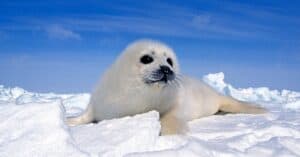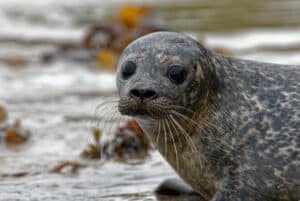Hawaiian monk seals are an impressive marine mammal.
As long as they have a healthy environment, monk seals can live 25 to 30 years. They can grow seven and a half feet long and weigh between 500 and 610 lb. During the day, they love spending their time foraging for octopuses, eels, lobster, and fish!
Unfortunately, Hawaiian monk seals are one of the most endangered marine mammals worldwide. However, conservationists are working hard to help uncover the mystery of this species.
Keep reading to learn 10 incredible Hawaiian monk seal facts.
1. Eels Get Stuck up Their Nose
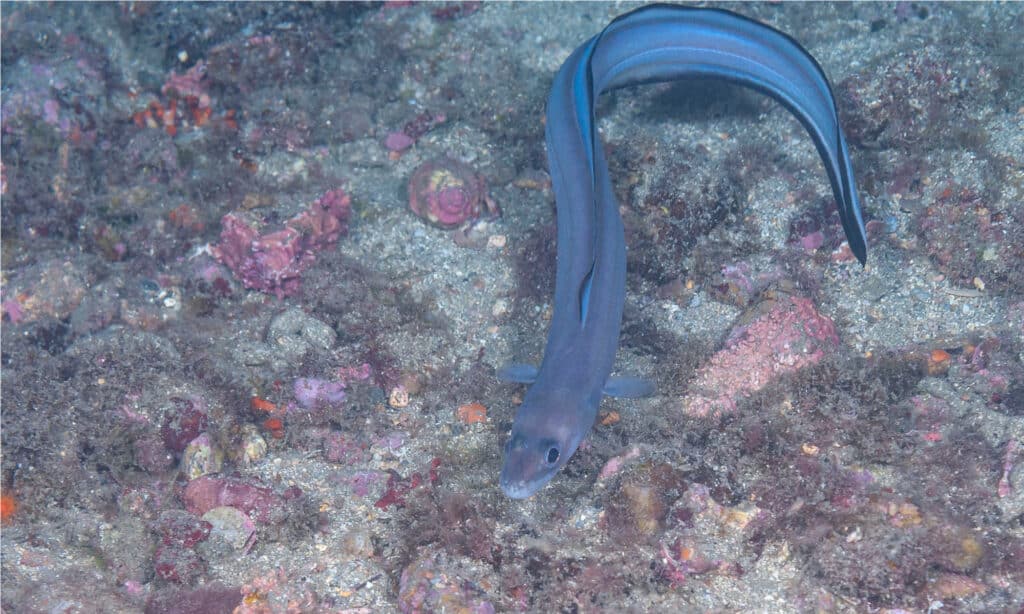
Eels sometimes get stuck in juvenille Hawaiian monk seal’s noses.
©Jesus Cobaleda/Shutterstock.com
Can you imagine what it would feel like to have an eel stuck up your nose? A Hawaiian monk seal can.
Several times, Hawaiian monk seal research program volunteers have noticed the eel-in-nose problem. It was first spotted back in 2016. The problem seems to only happen to juvenile seals, which may have to do with how they search for food.
Since monk seals are foragers, they root around the bottom of the ocean floor. Between the ages of 1-3 years, juvenile monk seals tend to stay in the sand fields where the eels are more likely to be.
A scared eel might rush up the predator’s nose in the heat of the moment to escape danger. Thankfully, getting the eels out of their nose is easy, and the monk seals can continue living happy, healthy lives. The eel, on the other hand, doesn’t survive the fiasco.
2. They Look Like Dogs and Hooded Monks
How did the Hawaiin monk seal earn its name? In Hawaii, locals call the seal “Ilio holo I ka usual,” meaning “dog that runs in rough water.” It makes sense, considering the seal has an adorable canine-like spirit.
But where does the monk part of their name come from? It has to do with how their skin folds resemble a monk’s hooded coat.
3. Hawaiin Sea Monks Like Warm Water
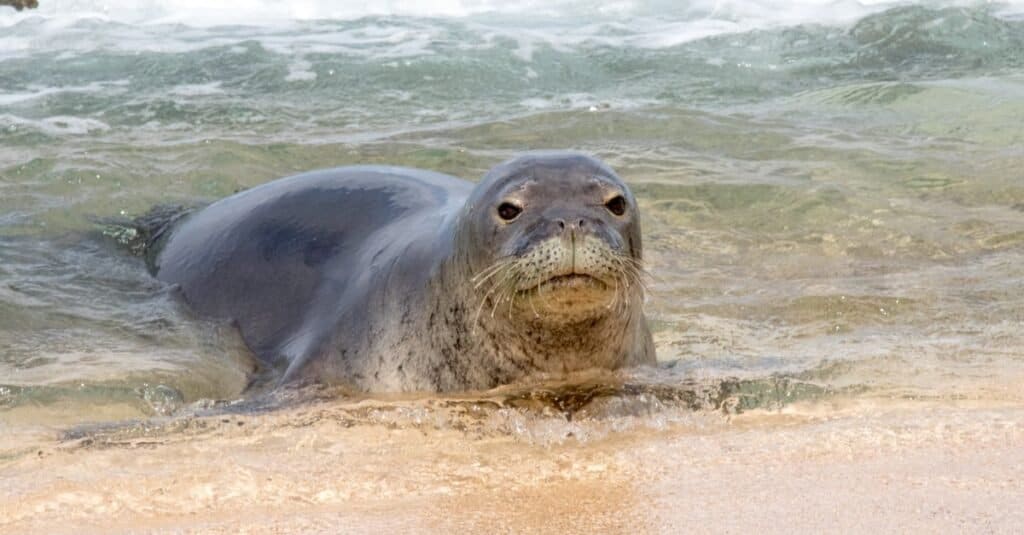
Hawaiin monk seals prefer warm water.
©Lorraine Logan/Shutterstock.com
The majority of seals thrive in cold waters. The Hawaiian monk seal is a unique exception. These seals prefer living in the warm waters off of remote Hawaiian islands.
The islands are barely ever used by humans. So, the seals have plenty of room to roam around foraging for food in the coral reefs.
4. They Lose Hundreds of Pounds While Nursing

Hawaiian monk seal feeding her pup.
©Rhiannon Coburn/Shutterstock.com
Becoming a new parent can be stressful for any species. However, Hawaiian monk seals make things extra hard on themselves by changing their eating habits.
Mother monk seals are incredibly dedicated. They stay with their pups for every second of their life for the first five to six weeks. They’re so dedicated to watching the pups that the mothers don’t even eat. While nursing, a mother monk seal could lose hundreds of pounds. However, once the pups go out on their own, she can start chowing down again!
5. Male Seals Commit Mobbings
When mating season comes around, tensions rise for the Hawaiian monk seal population. Sometimes the male monks will kill females or pups during group attacks called mobbings.
The frequency of mobbing deaths tends to increase as the populations become more male-biased. Concerned animal activist groups have been looking for ways to balance the monk seal population male to female ratio to ensure their survival.
6. Hawaiin Monk Seals Are Severely Endangered

Hawaiian monk seals are one of the most endangered marine mammals.
©Bonita R. Cheshier/Shutterstock.com
There are a lot of endangered marine mammals. However, Hawaiian monk seals are at the very top of the list. Thankfully, there are a ton of protection efforts taking place to help keep these seals alive.
Hawaiian monk seals joined the list of the US endangered species act back in 1976. Furthermore, almost all of the land and waters in the northwestern Hawaiian Islands are fully protected. Hawaiian monk seals are also becoming the sole focus of many proactive marine mammal recovery programs.
7. Mothers and Pups Relocate to Escape Sharks
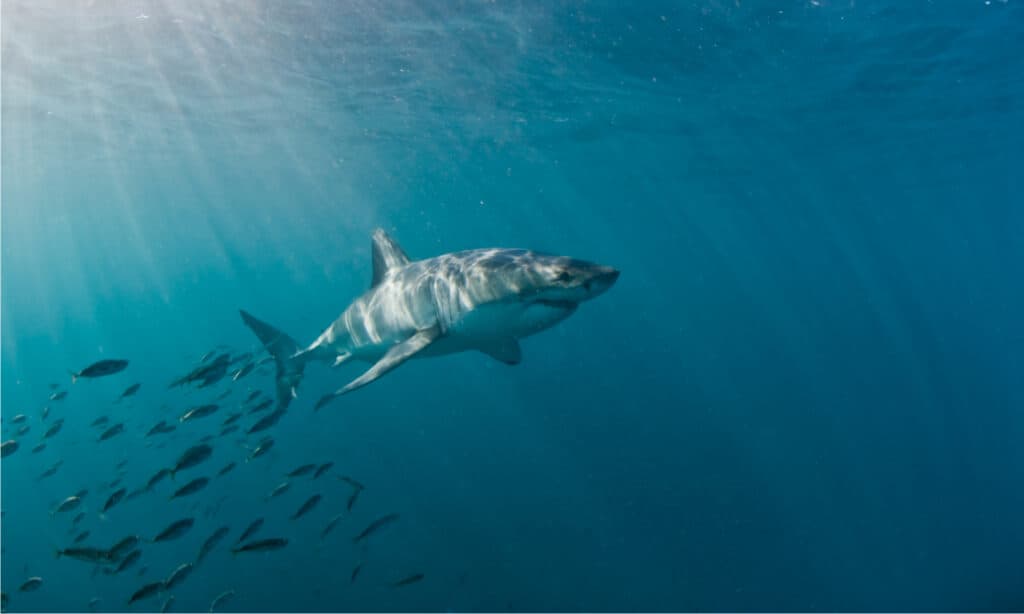
Relocation is sometimes used to protect seals from sharks.
©Fiona Ayerst/Shutterstock.com
Sharks love eating seals, and sometimes they go overboard. For instance, between 1997 and 2010, shark attacks shot up for female and pup monk seals.
For some reason, the area around the French Frigate Shoals became a feeding frenzy. The sharks killed almost a quarter of all pups born between those years. Thankfully, relocation efforts are useful in protecting the species without disrupting their quality of life.
8. A Pregnant Hawaiian Monk Seal Took a Man to Court
The authorities got involved when a Hawaiian monk seal was punched. A pregnant seal was resting in shallow waters when a 19-year-old tourist punched her in the face.
RK30, the Hawaiian monk seal, is a beloved beach regular at the Salt Pond beach park on the Hawaiian island of Kauai. Thankfully, the entire incident was caught on tape, and the video went viral.
Right away, the authorities got involved. The Hawaiian monk seal, and her unborn pup, were completely okay. However, the 19-year-old suspect was arrested and faced a 5-year prison sentence along with a $50,000 fine.
9. They Love Taking Naps

Hawaiian monk seals like taking 15-minute naps.
©iStock.com/greghonda
Hawaiian monk seals love spending their time eating, swimming, and taking naps! Lots, and lots, of naps. They love taking 10 to 15-minute naps multiple times throughout the day.
Thanks to underwater cameras carefully placed by students, there’s a ton of footage showing how monk seals spend their day. The cameras were originally placed to ease tensions between the seals and local fishermen.
Misunderstandings about the animals had fishermen worried that the seals might deplete the fish populations like an underwater locusts swarm. But seals don’t eat as much as you might think. The cameras show that the seals spend much of their time dozing under ledges on the sea floor.
10. Bears Are Their Cousin
When you look at a Hawaiian monk seal, what animal does it most resemble? If you’re thinking bear, you’re on the right track!
Hawaiian monk seals are closely related to bears and the group of animals that includes otters and weasels. They also have ties to the animal groups that include the raccoons, skunks, and red pandas.
The photo featured at the top of this post is © Benny Marty/Shutterstock.com
Thank you for reading! Have some feedback for us? Contact the AZ Animals editorial team.




